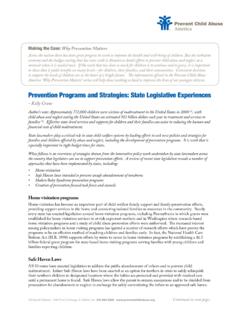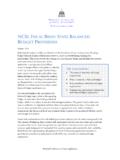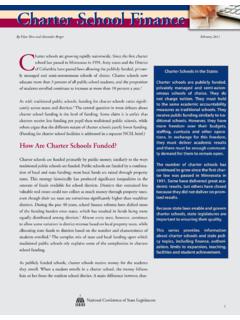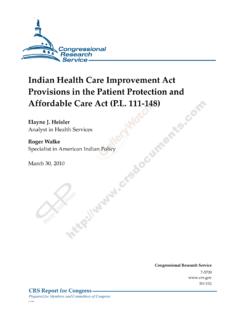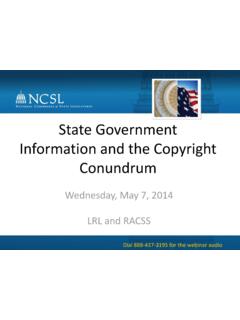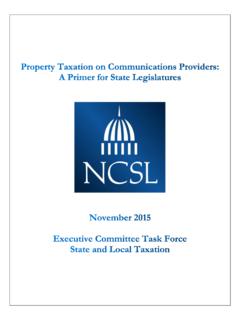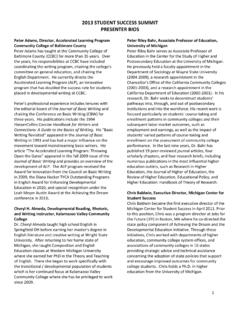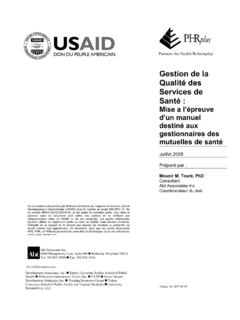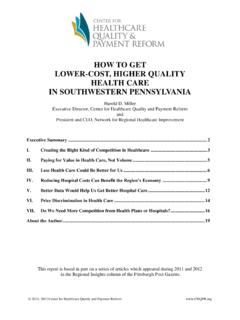Transcription of Trends in School Choice and the Privatization of …
1 Trends in School Choice and the Privatization of EducationChad d EntremontNational Center for the Study of Privatization in EducationTeachers College, Columbia 1990 there has been steady growth in the privatizationof education Voucher programs can be found in 6 states and the District of Columbia and tuition tax credit programs in 7 states(Alliance for School Choice , 2007; Huerta & d Entremont, 2007) Education management companies (EMOs) and charter School organizations (CMOs) have franchised School models nationally More than 1 million students are currently home-schooled, up from 300,000 students in 1988 (Stevens, 2001) More than 1 million students attend 4,000 charter schools in 40 states and the District of Columbia (Center for Education Reform, 2007) Federal law now mandates that students attending schools that fail to make adequate yearly progress (AYP) be provided with new schooling options and access to tutoring servicesPrivatization: Theory Supporters of Privatization assume that increased Choice will spur competition and innovation and produce cost-efficient ways of improving student achievement.
2 BUT, recent experiences have raised questions about whether programs can be generalized or succeed on a large short, the 1990 s also showed that it is not easy to outperform public schools No easy administrative savings No demonstrably superior pedagogy Few economies of scale ( franchising is not easy) Competitive response from public schools Additional costs in marketing, establishing brand equity, politicking and building partnershipsA review of all available evidence suggests that competition has a positive, but often insubstantial impact on student achievementThink of introducing a market as pulling on a rubber SchoolsMost Choice SchoolsStruggling Choice schoolsSuccessful Choice schoolsThe key is to reduce the pull of struggling schools without snapping the rubber band and disrupting the whole systemQuestion: Do the benefits of Privatization outweigh the costs?A comprehensive framework for evaluation (National Center for the Study of Privatization in Education, 2007) Analytic Framework Freedom of Choice : Does the program offer parents choices?
3 Efficiency: Does the program use cost-effective stratigies? Equity: Does the program provide equal access for all children? Social Cohesion: Does the program promote citizenship? Questions for implementation Finance: How will the program be funded and how will shifting dollars impact students and schools? Regulation: What are the eligibility requirements and how will education providers be monitored and assessed? Support Services: What services, such as transportation or information dissemination, are needed to ensure success?Another way to think about are the financial costs? New educational programs create new expenditures and rarely lead to cuts in established educational programs Functional costs Per-pupil allotments for participating students Infrastructure ( enrollment lotteries, application process, the transfer of student records, etc.) Regulatory costs New state and district employees to oversee Choice programs Extension of accountability system to include new schools Social Services Costs Community engagement Transportation AdjudicationWhat are the legal costs?
4 Most Privatization initiatives have been challenged in court for three reasons States must provide a uniform education to all students Public money can only be used for public purposes Public money cannot be used to fund sectarian institutions Recent Developments Milwaukee and Cleveland: same language, different result Zelman Decision: vouchers do not violate the 14thAmendment Colorado: vouchers unconstitutional, attack on local control Florida: a state funded, uniform system of public education The Blaine Amendment: the separation of church and state has not been fully addressed in voucher are the political costs? Few initiatives have been successful at the state and federal level Supporters of public schools are highly organized and well-funded ( teachers unions) Supporters of Privatization are often fragmented and associated with different political parties Policymakers have shown only a passing interest in Choice reforms A survey of six states found that a minority of policymakers (48%)
5 Support voucher reform More importantly, vouchers were considered the least important reform out of 11 possible initiatives Two-thirds of respondents who supported targeted voucher programs preferred NO voucher program to universal vouchers Recent Developments Florida s A+ Opportunity Scholarship Program Arizona s Corporate School Tuition Organization Tax Credit Utah s Carson Smith Special Needs Scholarship But let s not Privatization is appealing for two reasons Traditional public schools have struggled to properly educate low-income and minority students, especially in urban areas School Choice provides families with new schooling options and access to better educational services We cannot ignore the fact that substantial support exists for schools of Choice among historically marginalized populationsCosts may be minimized in three political and legal objections Ex.) Tuition tax creditsinstead of vouchers Universal access and business can participate Are used for a wider range of activities (music, sports, tutoring) minimize the relationship between government and to pre-established markets Ex.
6 Niche charter schools (cyber, home- School , HS dropout, performing arts charters) select educational processes Ex.) NCLB and private SES providers Often requires a period of trial and errorOr, consider the charter School alternative Widespread support for charter School reform Arizona California Massachusetts Conservatives value Increased emphasis on Choice and local control An important step towards Privatization Liberals value Increased resources to struggling School districts More students access high-performing schools Continued commitment to public educationFinally, be aware of unresolved tensions Suburban voters value public schools and resist polices that threaten local authority and redistribute local resources Large scale School Choice policies are likely to produce the following consequences: Erase municipal boundaries Dissolve neighborhood ties Lower housing prices Upset student enrollments
